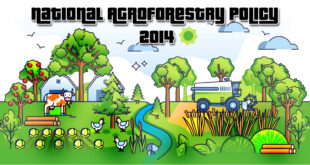- An invertebrate survey undertaken in the Thiruvananthapuram Wildlife Division has reaffirmed the relevance of the region as a biodiversity hotspot.
- The four-day exercise to survey the invertebrates of Neyyar and Peppara wildlife sanctuaries and the Agasthyavanam Biological Park with emphasis on arachnids was jointly conducted by the Forest Department and the Travancore Nature History Society (TNHS).
- Around 50 delegates including arachnologists and enthusiasts from various institutions, including Kerala University, Kerala Agricultural University and Christ College, Irinjalakuda, participated in the exercise.
- As many as 186 spider species, 191 butterfly species, 129 bird species, 41 odonate species, 45 ant species, 12 mantid species, and four cicada species were documented during the survey.
- The Neyyar wildlife sanctuary is home to 133 species of spiders, 182 species of butterflies, 70 species of birds, and 35 species of odonates, while the Peppara wildlife sanctuary recorded 83 spider species, 126 butterfly species, 115 bird species, and 20 odonate species.
- Many interesting species, including tarantulas like Haploclastus and Poecilotheria species, were among those that were documented. The researchers who documented spider diversity have called for undertaking specific assessments of arboreal and litter spiders as a follow-up to the survey.
Butterfly diversity
- The butterfly diversity of the Thiruvananthapuram wildlife division was updated with species such as Common onyx and Palni fritillary which were hitherto unseen in the Agasthyamala region.
- Other notable records were Red-disc bushbrown, White hedge blue, Hampson’s hedge blue, Rosy oakblue and Painted courtesan.
- Odonates’ diversity was less compared to the monsoon season. However, the survey recorded endemic species such as Euphaea cardinalis and Euphaeafraseri.
- The notable findings among birds included Ceylon frogmouth, great Indian hornbill, blue-throated blue flycatcher, Wayanad laughing thrush, blanford’s laughing thrush, Ashambusholakili, black and orange flycatcher and square-tailed bulbul.
- Thiruvananthapuram wildlife warden I.S. Suresh Babu said the data generated from the survey will be added to the management plan of the Neyyar and Peppara Wildlife Sanctuary.
SOURCE: THE HINDU, THE ECONOMIC TIMES, PIB
 Chinmaya IAS Academy – Current Affairs Chinmaya IAS Academy – Current Affairs
Chinmaya IAS Academy – Current Affairs Chinmaya IAS Academy – Current Affairs



